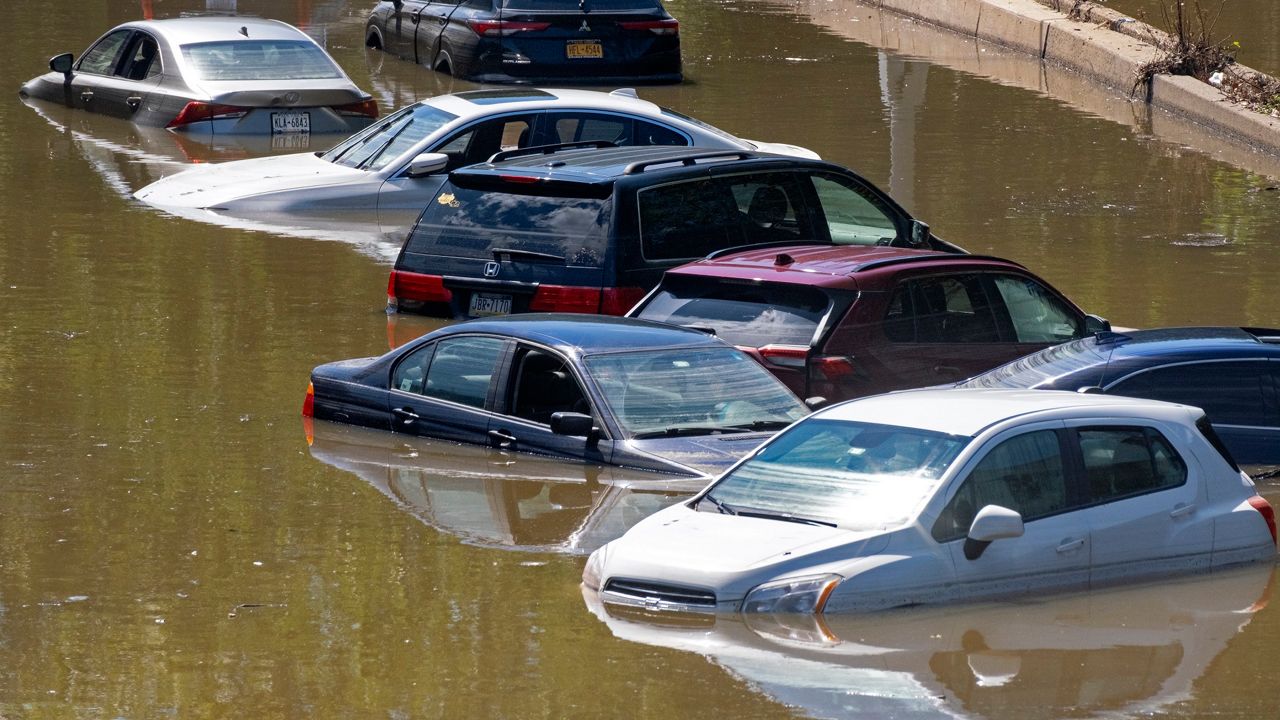Mayor Bill de Blasio released a new report Monday that outlined how the city will prepare residents and city agencies ahead of extreme weather events, including preparing a census of basement apartment residents who face particular risks during flash flood events and creating an “aggressive” alert system.
The report, created by a task force of a range of leaders in city agencies and offices, comes three months before de Blasio leaves office, and represents his last chance to shape how the city manages a rapidly changing climate.
Though the report moves deadlines on existing and proposed climate adaptation plans, it does not lay out how it will preserve those timelines through the next mayoral transition.
De Blasio has framed the report as a response to the historic intensity of rainfall brought by remnants of Hurricane Ida, which inundated large swaths of the city and led to flash floods and the deaths of 13 people locally.
“We’re in a whole new world, and we have to act very differently,” de Blasio said.
The report outlines the city’s post-Ida response, as well as several areas for proposed updates to city procedures, laws and programs to prevent loss of life and mitigate damage during intense storms.
Some efforts described in the report are already ongoing. The report said that the city’s emergency management department is in the process of hiring a private weather forecasting firm to provide a “second opinion” on weather predictions provided by the National Weather Service.
At a Monday news conference, de Blasio compared that effort to the city’s police department creating its own intelligence gathering division in the wake of the Sept. 11 attacks, to find “information that might have gotten lost in other bureaucracies.”
“National Weather Service, they do good and important work,” de Blasio said. “But we’ve too often found the reports were too vague, or too late.”
Yet as the report notes, the city activated its flash flood emergency plan two days before the storm based on consultations with the federal weather service. The mayor eventually issued a travel ban at 11:45 p.m. on the night of the storm.
De Blasio has repeatedly suggested that the historic rainfall overmatched any effort to predict its intensity.
“What hit us is what was called remnants of Hurricane Ida,” he said Monday. “I’ve never seen remnants of anything do as much harm and cause as much destruction.”
The report writes that the travel ban, as well as emergency alerts and a state of emergency declaration, “came too late -- a challenge shared by governments and weather agencies across the tri-state area and beyond.”
The report also outlines a planned city effort to create a census of basement apartments by May of next year and “identify all basement dwellers citywide,” as well as other steps to attempt bringing those units up to city building code standards. The city estimates that more than 100,000 New Yorkers live in 50,000 such residences. Of the 13 fatalities caused by Ida’s flooding, 11 occurred in basement units.
Yet a pilot program in Brooklyn to legalize basement units largely failed, with only a handful of residents receiving funding for construction costs, and the city cut the program’s funding last year. Immigrant advocates have also noted that such repairs are costly, and city efforts to assess such sites can result in evictions or orders to vacate when they do not meet city standards.
The report suggests that it’s “possible, however, that the pilot is not representative of the city, and there is a pathway to basement conversions in other areas that will be less difficult and costly.”
The report does not detail plans for extensive changes to city infrastructure. In recent weeks, de Blasio has underscored his belief that the city should be investing its money in long-term projects that increase the amount of renewable energy coming into the city from hydroelectric, solar and wind sources, while relying on federal money to fund large-scale investments in infrastructure.
“We can do all the mitigation in the world. We could try and redo our entire sewer system, which would cost a massive, massive amount of money,” de Blasio said last week. “But the very best thing we can be doing is going for the root cause, and reducing our reliance on fossil fuels, rapidly, quickly. That's the best way to address extreme weather once and for all.”
The new report notes that a complete overhaul of the city’s sewer system would cost $100 billion, and instead highlights new initiatives to add 50 acres of porous concrete to the east Bronx, checking sewer grates for garbage more frequently in commercial areas and funding an expansion of green infrastructure, such as porous pavement and rain gardens, to seven NYCHA housing complexes.
Other elements in the report will require changes to laws and buy-in from private landowners and developers, such as tax incentives to create porous, green space for holding excess rainwater and launching a study to determine which neighborhoods would benefit most from widespread installation of backwater valves, which prevent sewage water from backing up through toilets and sinks.
Some of the proposals in the report were carried over from other city climate preparedness documents, such as a Stormwater Resiliency Plan released this past May. The 17 initiatives in that plan have deadlines adjusted up, by several years in some cases, including creating new citywide models of stormwater flooding based on combined maps of both coastal water and groundwater, something the city does not have now.
With only months left in de Blasio’s term, it is unclear how many of the changes outlined in the new report will be carried out by the city’s next mayor.
Brooklyn Borough President Eric Adams, the Democratic nominee who is heavily favored in the November general election, released a climate plan Friday that mirrored several elements of de Blasio’s report, including a new storm alert system, bringing basement apartments up to code and adding more green infrastructure to the city.








